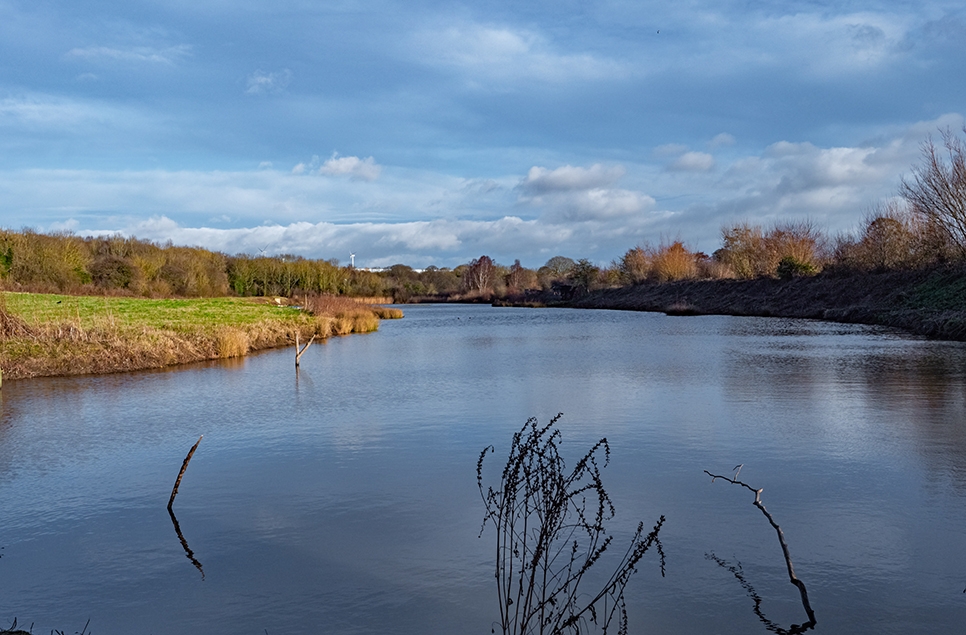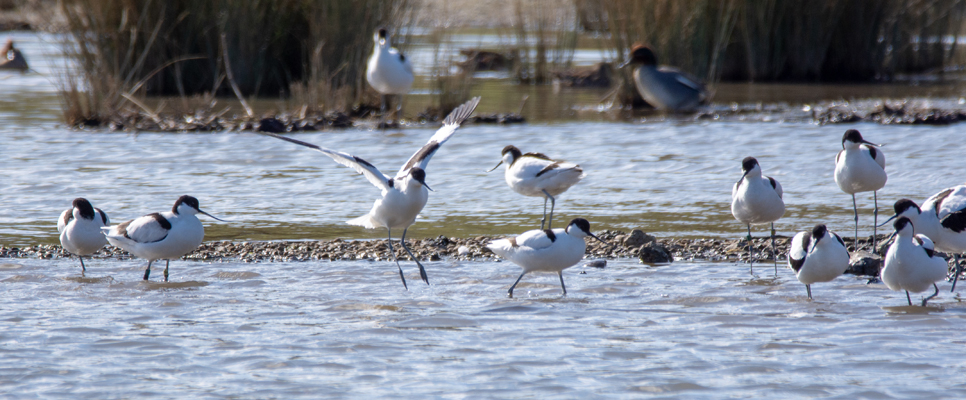Why managing Wader Lake is no simple task

Water level management on Wader Lake is critical for providing the correct balance of inundated and non-inundated grassland, including areas of open water bodies to attract and provide the correct conditions for the many types of bird species that use the lake throughout the year. But if only it was as simple as just lowering or flooding the lake...
When it comes to Wader Lake, there are many factors that need considering when managing the water levels. It's something Reserve Manager John Gowland is hugely passionate about and is keen to share with you some of the things we do and why we do them.
Winter
During winter, we flood the lake to create ideal conditions for a variety of water birds such as gadwall (pictured below), northern shoveler, common shelduck and Eurasian teal. By flooding the low areas of the lake's edge, we help to create a larger water body for attracting these regular winter visitors and often some unexpected ones too. Flooding areas of low grassland also releases grass and plant seeds for dabbling ducks to feed on, while reducing the amount of vegetation at key points in readiness for the new season.
Soft muddy draw down areas are important for feeding waders, and Wader Lake is managed to provide a roosting site for various species including curlew during those winter months. Water depth is important for the range of species of duck attracted to the site with diving duck such as tufted duck able to feed in deeper water than dabbling ducks. Water depth can also be a factor when maintaining refuge areas for wintering birds during freezing conditions.
Spring and summer
Flooding the islands is a natural way of suppressing annual vegetation on the islands, so once water levels are lowered in spring, the islands are free of weeds and other vegetation, making them ready for the annual return of avocet (pictured below) and common tern looking to nest. This is all done to a specific timescale which varies year on year, but John and the reserve team carefully monitor activity on the lake and pinpoint the best time to act - trust us, there is a plan!
The correct balance of land and water during the breeding season is key, and it's important that soil water levels of wet grassland are not subject to excessive drying during this time as accessibility of soil invertebrates for foraging birds could be compromised.
Similar to winter months, muddy draw down areas are also vital feeding grounds for waders with chicks. Permanent open water bodies with varying water depth are necessary for the site's breeding duck populations which includes both dabbling duck species such as gadwall and diving ducks such as tufted duck.
Autumn
Once the birds have finished breeding on the islands of Wader Lake (which is usually late August when the last terns fledge) we start lowering the water level to expose the muddy shores. This enables birds such as ruff, black-tailed godwit, lapwing and redshank to forage in the mud, where they can find lots of insects etc.
The water levels remain lower throughout this season, with pockets of deeper water still remaining thanks to our desilting work on the lake, allowing for birds such as diving ducks including tufted duck and even kingfisher to feed. This offers more biodiversity to the area.
Black-headed gull
In recent times the black-headed gull population has increased at Washington and they have started to nest on site. They tend to nest in late March and early April which is much earlier than for example common tern, who don't start arriving until mid-late April. By keeping the water level high during this time aims to discourage the gulls from nesting early, and therefore allow an opportunity for other species when the time comes.
By keeping the water level high tries to ensure that black-headed gull don't take over the islands before the avocet and common tern have arrived and settled. Black-headed gull are very aggressive towards other bids nesting on the islands and interactions between these birds can result in the loss of eggs and small chicks, something we absolutely do not want.
There is plenty of space on the surrounding lake and meadows for nesting gulls which keeps them separate from key breeding species.

Water source, weather and rain fall
Wader Lake is fed from natural water sources. Before the water enters Wader Lake, it enters several treatment ponds known as the 'Round Table Ponds' which are just behind the reeds at our duckery. Over time, this water has deposited a large amount of silt into the lake, which has made it increasingly more difficult to manage the water depth.
The water flowing into the lake is also very unpredictable and we have noticed a decreased amount of 'normal' water flow, but during storm events we often see flash flooding.
Desilting Wader Lake has restored it to original levels which will help effectively manage the water depth throughout the year. This will provide safety for breeding birds, as well as better feeding and roosting areas year round.
Invasive species control
Control and monitoring of the very invasive and non-native Crassula helmsii (an aquatic plant from the succulent family - pictured below) is a top priority. This plant species has the potential to impact on both open water and their surrounding margins across our wetlands. Once established, it's very difficult to control without severe impact on wildlife. By manipulating the water level during the different seasons from high water flooding to draining down the water and keeping water body banks steep all reduce the area of exposed mud into which the Crassula can colonise, helping keep it from taking over as it struggles to grow if conditions are regularly changed.

Support our work
Our ongoing habitat and conservation work is at the heart of everything we do. Sign up as a member and help us support wetlands and wildlife both at Washington and worldwide.
Join as a member





